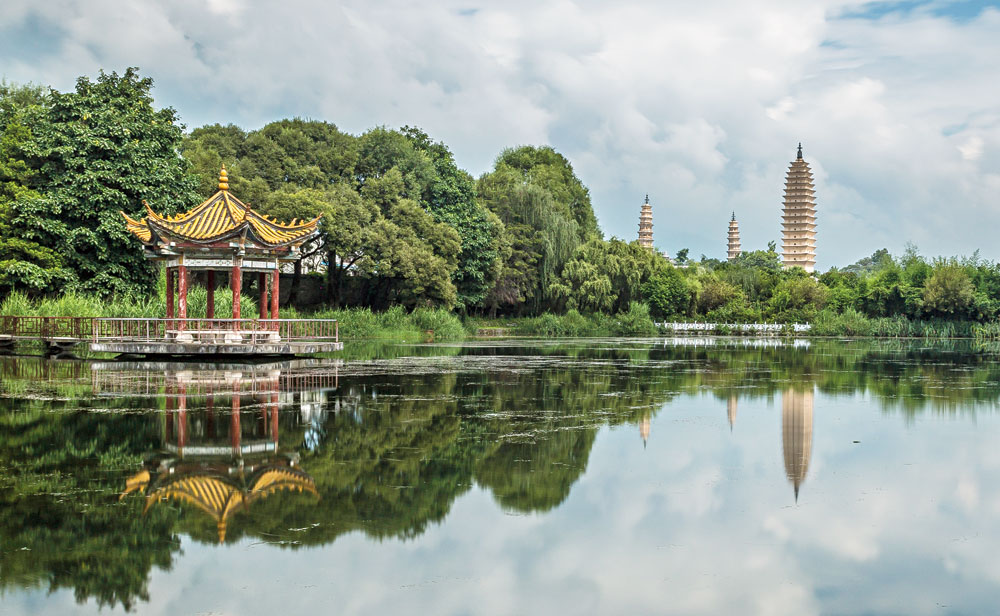How to get there
China Eastern Airlines runs a daily flight from Calcutta to Kunming, departing at 12.30am. The two-hour flight lands at 5am China time.
Dali is 259km from Kunming and can be reached by road (four hours) and by air (40 minutes ). A high-speed train service, with a top speed of 250km/hour, has started from July 1 and takes about two hours.
Valley of flowers
Dali welcomed us with a drizzle and a crisp, cool weather. My brochure described it as a city of eternal spring that had been voted one of the most “liveable” cities in China. But the drizzle also put a question mark on the cable car ride that would reach us to the upper heights at the Cangshan mountain, recognised as a global geo park by Unesco because of its unique landscape and biodiversity.
Enquiries elicited good news. The ride was on. We were welcomed by a grand aerial view of the tranquil Erhai Lake around which the town has developed. The higher the cable car went, the closer we got to a veritable flower show on the slopes of the mountain till we landed right in its middle. “The season is over in the city. But since it is cooler here, the flowers are still in bloom,” said our guide, as we slipped into hired raincoats. The state of Yunnan produces more than 70 per cent of the flowers sold in about 80 cities of China and exported to 40 countries.
The goal was now to reach the glacial lake Ximatan at a height of 3,920m. “Ximatan means horse-washing pond. That is where the Mongol invaders used to stop to wash their horses,” our guide explained. With undulating wooden steps in place amid the vale of rhododendrons and azaleas, the walk did not seem challenging. But half an hour on, one realised that the stairs were unending. As I stopped to catch my breath, the guide asked if I wanted to return. But the ferns and flowers, the murmuring brooks and the mist-capped peaks made for too intoxicating a sight to turn one’s back on. A hot cup of cocoa at a wayside wooden cabin perked me up for the final assault.
When we reached the top, it was drizzling and the lake was overhanging with mist but I had earned my Facebook-worthy Eureka moment.
The adventurous, I was told, take a shorter cable car ride than we did and hike up a stone-paved trail called Jade Cloud Road for 11.5km. Good luck to them!
Voyage in the lake
With our hotel overlooking Erhai Lake, I was waiting for a chance to explore the waters. The chance came on the final day when we were taken on a voyage on the “Ear-shaped Sea”, as the Erhai literally means. The crystal clear water evoked sad comparisons with our flotsam-ridden Hooghly. But the squawking of gulls soon snapped me out of my reverie and my mood lifted on spotting the Cangshan range in the distance.
We stopped at a button-shaped island where local women were frying fresh catch from the lake and serving them. The Chinese tourists made a beeline for the fries and the place became abuzz with incomprehensible chatter. A couple of old women were selling carved wood products and I was chuffed at the way I managed to bargain for a laughing Buddha, by using my cellphone screen to let her type out her offer and typing my counter-offer.
The second stop on the cruise was on a bigger island where my high point was getting to dress up in Bai costume. So strong is the Bai influence on the town that even on the ship, Bai performers presented an elaborate tea ceremony and a beautiful dance programme. And I could totally tell which of the girls were married!
Bollywood in China
Having read about the increasing popularity of Hindi films in China ever since Aamir Khan’s 3 Idiots released here, I wanted to check out a movie theatre. That opportunity came as the hotel we were staying in had a multiplex on its premises. The hall that opened in January had already screened “the Wrestling film” (Dangal), Bajrangi Bhaijaan, Secret Superstar and Toilet: Ek Prem Katha. Bahubali was currently running. “I loved the wrestling film. The emotions were so true that I had tears in my eyes,” said Cindy.
In China, all films have subtitles, even the Chinese ones. “We are too used to reading dialogues,” Cindy smiled. For foreign films, one has an option of English and Chinese subtitles. Other than Hindi and English, there were Japanese, Korean and some African films listed at the booking counter. Movie viewing in theatres is seeing a resurgence in China because of the halls being renovated. A ticket cost about 30 RNB (about Rs 330). “But you can get it cheaper on group aggregator apps,” said Yang Jingyu, an employee, adding enthusiastically that she had loved the ending of 3 Idiots and “Khan” (Aamir) had visited Chengdu, the capital of Sichuan province.
It was close to midnight. I was waiting at the boarding gate of China Eastern Airlines at Dum Dum airport. My host for the trip and the rest of our group were still airborne on their way from Delhi, thanks to a horrendously delayed take-off. I was pleading with the staff to hold the flight but they would not relent. With no documents related to the trip save my flight ticket, no acquaintances in the country and no Mandarin, I knew it could be courting calamity if I were to take the flight alone. “This is the last call, madam. Are you coming?” One final attempt to reach my host’s phone, still switched off, and suddenly my mind was made up. I walked in.
Kunming, the capital of Yunnan province and my initial destination, was just two hours away. From Kunming, I was to take an even shorter flight to Dali, a picturesque town on the bank of Erhai Lake and nestled in the lap of Cangshan mountain, dating back to the ninth century. But nothing that I would see in course of my sojourn there would please me as much as did the sight of my host’s colleague from the Chinese foreign affairs office waiting inside the airport with a placard bearing my name. And unlike their immigration officials, she spoke fluent English! “Call me Cindy,” she smiled. Chinese youngsters, I learnt, take up a Western nickname these days.
In every airport shop window at Kunming, there were cousins of Star Wars's R2-D2 peering. The big ones, about waist high, cost 8,000 RMB ($1200) and the small ones 4,000 RMB ($600). “They can teach you short English sentences and do chores if so programmed. A friend is so obsessed with his robot that he has remodelled his house so that his robot can perform basic chores like drawing the curtains, dimming the lights and operating the washing machine. He can control it even from office,” Cindy told me.
I met one at the airport, which, on its face panel being touched, gave me a brief introduction to Kunming in just the sing-song mechanical voice that robots in Hollywood films speak in.
Why, even the airport trolleys were GPS-enabled and directed one to the luggage belt and displayed the live boarding schedule of flights!
Past continuous
With the most exhausting part of the tour out of the way, I chose to amble through Dali Old Town for the rest of the day. The walled town, located between the Cangshan mountain and the Erhai Lake, is a pedestrian-only 3sq km area.
We posed for pictures in front of the South Gate, a six centuries-old structure, and walked in. With cobblestone streets lined with souvenir shops, restaurants and bars, the old town is a tourists’ paradise. No wonder there are so many boutique hotels here.
I stopped at one of the shops with piles of rose petals on the counter, drawn by the smell of baking. The cakes that were being put out fresh from the oven indeed smelt of rose! In this part of the world, they don’t just display their flowers. They eat and drink ’em too.
Tea was on sale in every souvenir shop. I picked up a circular packet. It turned out to be pu’er tea, a speciality of Yunnan. “That’s very good for health. In India, you have only black tea. In China, we have six types of tea,” said our guide. Dried petals of various hues were packed in bottles or in small circular moulds. “That’s chrysanthemum tea — good for itchy throat. That one is rose. Girls think they will get rosy cheeks if they drink it,” the guide grinned, as he translated what the young female shop attendant said, I suspect adding his own spin to it.
He would soon take me to the Museum of Intangible Heritage nearby where I would get a live demonstration of how tea leaves would be put in a circular mould, steamed in an oven and pressed into compact shape.
A variety of street food was being sold, including some of suspect shape and species. On a subsequent trip, my host would make me taste baby octopus tentacles, which were fried on the spot and served, dipped in a salty masala. I tried one, if only to overcome a childhood phobia of creatures of the deep. It was somewhat spongy to chew and the masala was very tasty.
A pile of shiny reddish-grey fruits made me take my camera out. “Those are coconuts from Thailand. Very good for a drink,” I was told. “At home, we call them green coconut,” I retorted, and immediately realised how incongruous that name was for the Thai variety.
Dried roots were on sale at some shops. “Ginseng?” I offered a shot in the dark. “That and other medicinal herbs,” the guide translated the shop attendant’s reply. But when the process of dyeing the clothes on sale next door was explained to us, I cut in confidently: “That’s tie and dye,” though the designs looked a lot different from our Indian ones.
Of immense beauty were the pieces of marble on sale as decor. “In our language, the term for marble is Dali Xi, or stone of Dali,” said the guide. The Dali marble is not pristine white but has natural stains of black, ash and grey that create spectacular designs. Marble slabs were used outside as road signs too. They went well with the look of the area around the Old Town. All houses here have to conform to the Bai style of architecture with the exteriors decorated with hexagonal honeycomb patterns made up of white, black, and dark blue glazed tiles. Later, we would be taken to a burnt-clay workshop where many-headed figures called six-blessing cats were modelled. “They signify good luck and are placed on the ridge of Bai rooftops,” I was told.
Three Pagodas
The rest of the group, that had missed the flight, joined us the next day. After breakfast, we left for the symbol of Dali — the Three Pagodas.
From a distance, the pagodas look like three ballpoint pens standing between the magnificent mountain and the elegant lake. The middle one, the oldest one from the ninth century Tang dynasty and the tallest, seemed to be leaning to a side. “That’s the result of over 30 earthquakes,” the guide, dressed in traditional Bai costume, explained. The four elements Dali is famous for — wind, flower, moon (reflected in the lake) and snow (on the mountain) — are present on the Bai headgear too. “These white strings hanging on the side are wind, the floral motif at the base is flower, the crescent shape stands for the moon and the white foamy top is for snow,” she explained.
And you could make out if a Bai woman was married or not from the length of the strings on the headgear. “When a girl gets married, the strings are cut short,” she added. “End of the days of being given a long rope?” I wondered, as we walked towards the imposing Chongsheng temple.
Ni hao
In a land where WhatsApp works only at the airport and Facebook seldom opens, there is no scope to post updates on the go. But I did download WeChat, the Chinese messenger service, on my phone before leaving Calcutta. That allowed not just free communication with my hosts in Wi-Fi-enabled areas but also endeared me to them. It was almost as if I was speaking their language!
I did pick up a few Mandarin words which, coupled with a wan smile, won hearts. A ni hao (hello) while walking in and a xie xie (thank you) at appropriate moments also did their bit to further one’s stock.
As for food, not for a day were we served anything that we are used to in Chinese restaurants back home. With the meat and the fish — the latter was fresh from the lake and the sight warmed my Bengali heart — came an unexpected lot of veggies. Who would have imagined a strict non-vegetarian like me extending chopsticks for a third helping of steamed spinach? Of the variety of meat that reached my plate, donkey meat was heading the list in terms of novelty till one item knocked it right out of the table — tongue of duck. Most people I have shown the picture of the dish to on my return are still in shock. To the few who recovered quickly enough to ask if I was brave of palate to try it, my answer was, “Yes, just one bite. And it was a tough bite.” On hearing that, they lost their tongue!
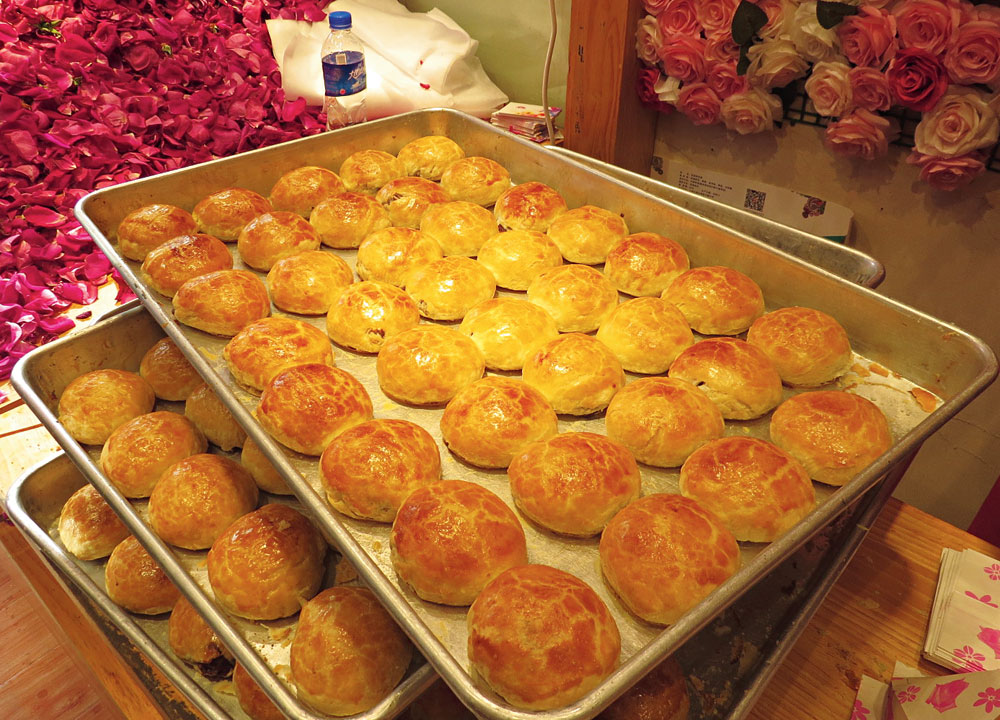
Rose petal cakes; in this part of the world, they don’t just display their flowers Photo: Sudeshna Banerjee
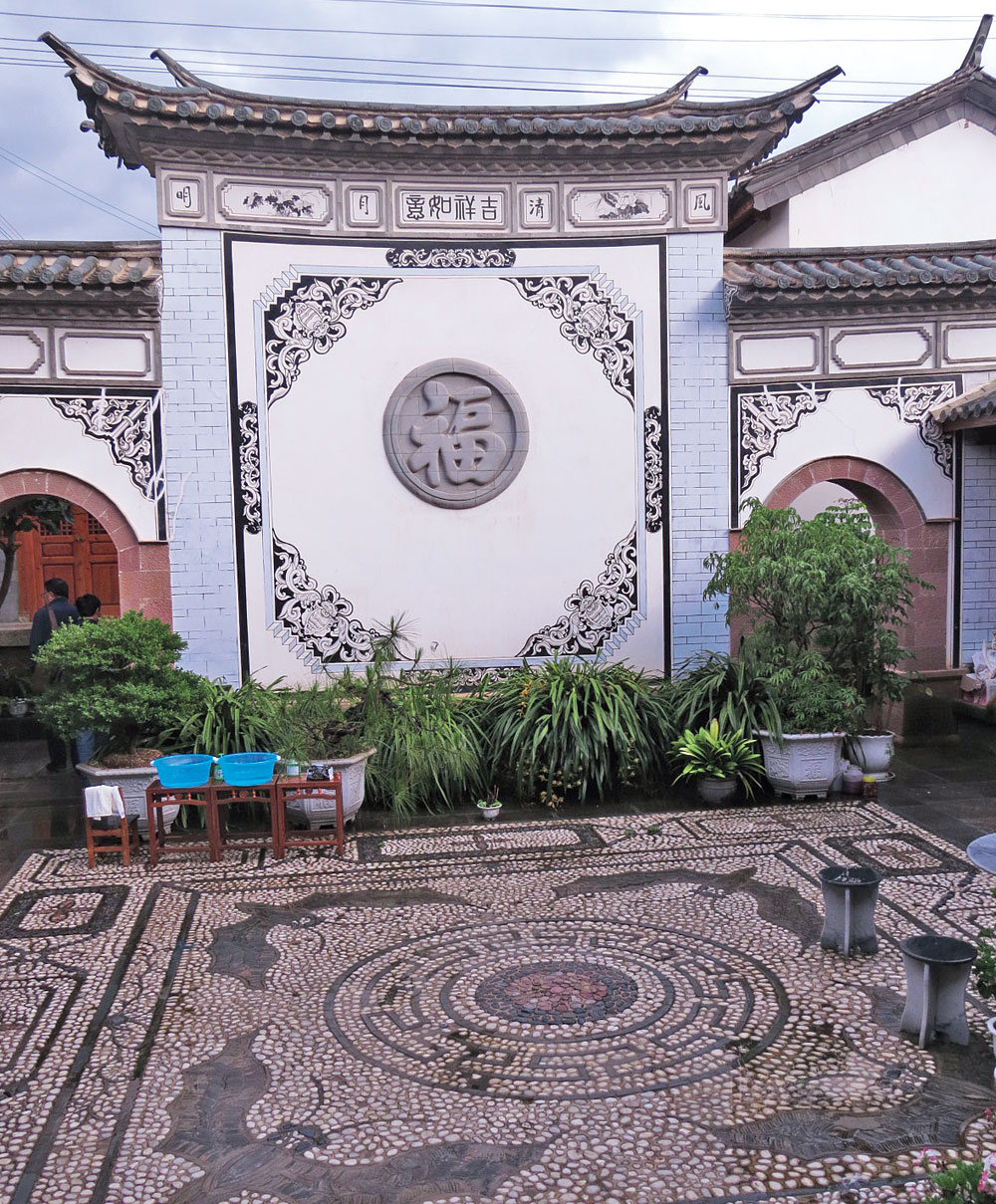
Houses here conform to the Bai style of architecture with the exteriors decorated with hexagonal honeycomb patterns made up of white, black and dark blue glazed tiles Photo: Sudeshna Banerjee
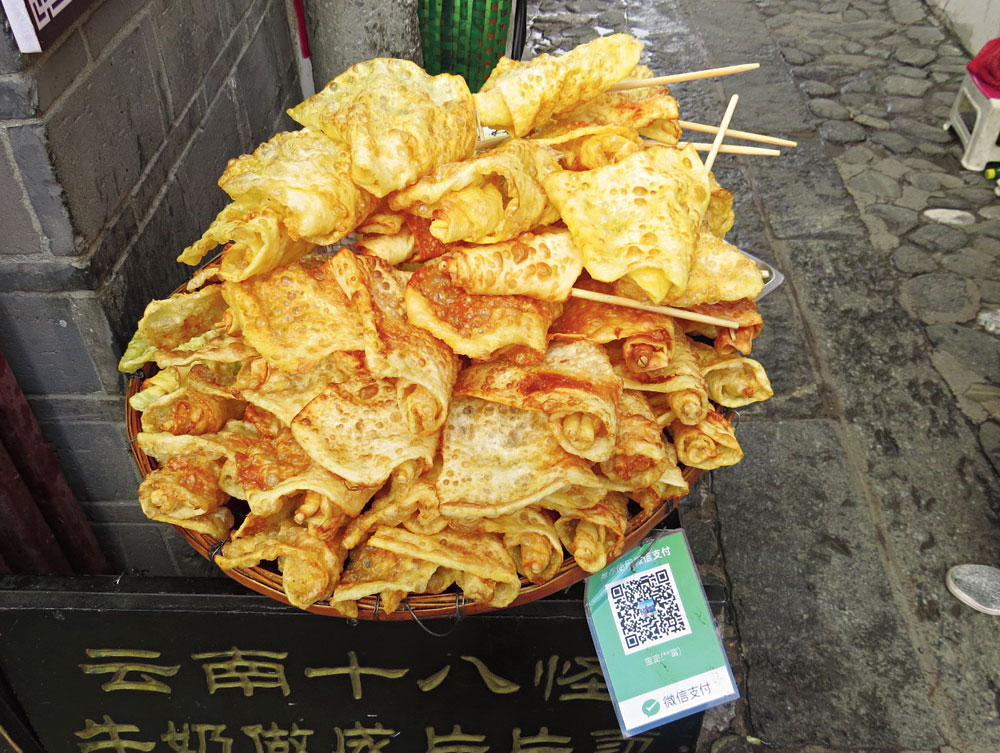
Before you head to China, download WeChat, using which you can even pay for the street food in Dali Photo: Sudeshna Banerjee
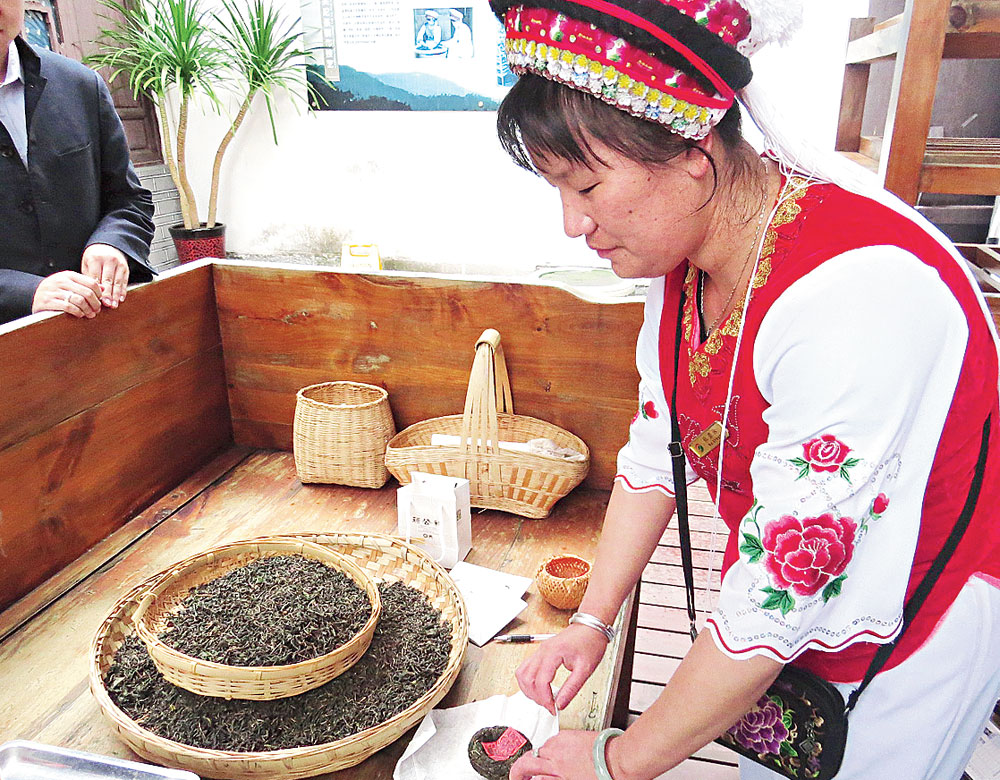
Pu’er tea, a speciality of Yunnan, being moulded Photo: Sudeshna Banerjee
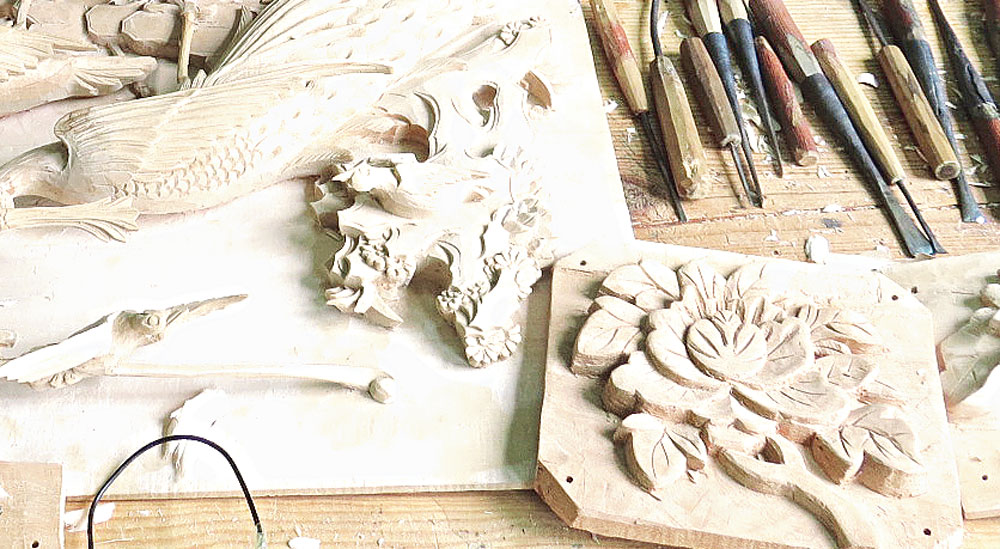
Don’t forget to buy carved wood products if you are in Dali Photo: Sudeshna Banerjee
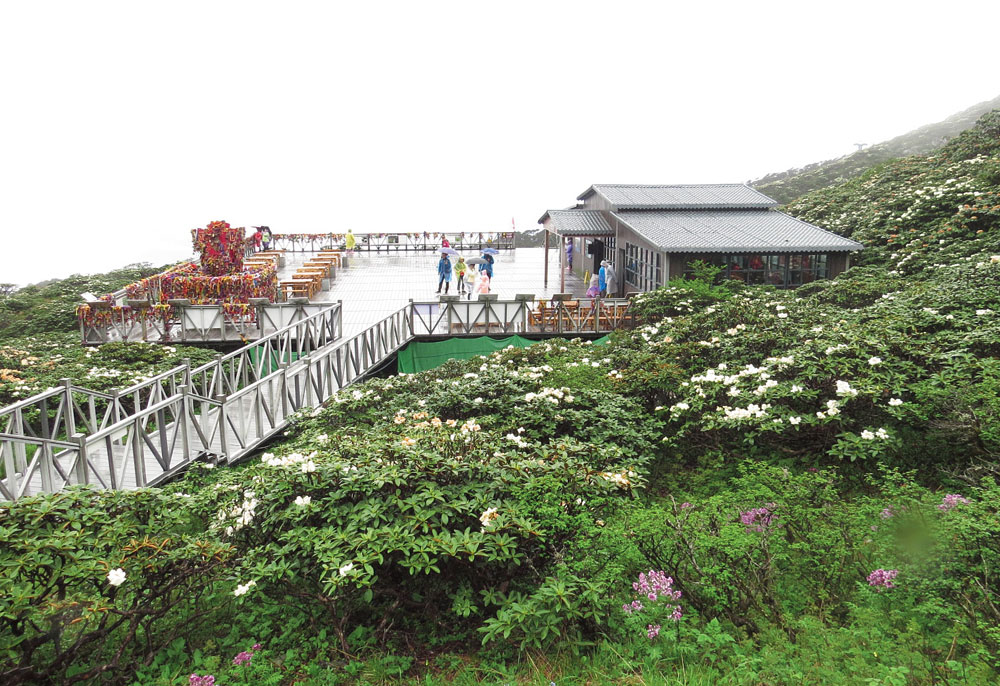
Cangshan mountain is recognised as a global geo park by Unesco because of its unique landscape and biodiversity Photo: Sudeshna Banerjee

